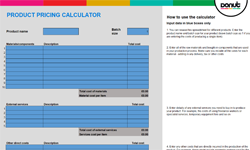
Sales of furniture are influenced by the number of housing transactions, fashion trends and by levels of consumer confidence. Check out our practical guide for starting and running your own furniture shop.
- Research your target market
- Selling on eBay and Amazon
- Decide what to sell
- Promoting your shop
- Price your products
- Buy an existing business
Research your target market
Your customer base will be influenced to a certain extent by the type of furniture you sell. If you decide to concentrate on the domestic market (which accounts for about 70 per cent of the market for furniture sales), most of your customers will be shopping specifically for furniture, but if you are located in a town centre you might attract people who just happen to be passing your shop so an eye-catching window display is very important. The extent to which your shop specialises will also affect your customer base. If you become known as a supplier of high quality or unusual items, for example, you could attract customers from further afield.
Of course, if you decide to sell online or by mail order then your potential customer base is the whole of the UK - or even beyond if you are prepared to ship certain goods overseas.
When deciding what to sell for the domestic market it is worth bearing in mind that certain items (beds, suites, tables and so on) are popular with first time house buyers for whom price will be all-important. More expensive items of furniture are likely to bought by older, more affluent people, perhaps looking to upgrade their living room for example. So you could try to match the range of goods you stock to the type of people who live in your area. Your market research will have helped you to identify any gaps in the market and the type of customer you can target.
You could think about whether there would be any opportunity for supplying the contract market, providing furniture for public areas in hotels, restaurants, hospitals, schools or nursing homes. They will occasionally need to purchase large amounts of furniture. You may be able to supply them, although they will probably expect a big discount (usually between 10 and 20 percent).
You might also want to consider the possibility of targeting the office sector, supplying desks, workstations, seating, bookcases, cabinets etc. Once again, your customer would expect a discount for a large order. Many furniture shops which sell office furniture sell second hand furniture as well as new.
Bear in mind that professional residential landlords generally require competitively priced but reasonably good quality furniture items on a fairly regular basis. Some favour secondhand furniture. University towns and cities in particular usually have a high concentration of rented properties.
Estimating demand
It's very important to find out whether there is enough demand for a furniture shop in your area. Firstly, check out the competition. Count how many outlets are already selling furniture and related items in your area. Remember to include:
- large specialist chain stores, particularly IKEA and DFS. Most of these also offer online sales
- department stores (for example John Lewis)
- other mixed retailers like Wilkinson, The Range and Dunelm Mill
- some large DIY stores
- other independent furniture retailers
- catalogue shops such as Argos
- secondhand shops
Bear in mind that you are also likely to face strong competition from online retailers, including some very large ones like Tesco Direct and those selling through eBay and Amazon. There are also many specialist furniture retailers who only sell online, like Sofa Sofa or WorldStores.
It may be that you will only be competing directly against some of these outlets because you will be targeting a particular segment of the market or selling very unusual ranges, exclusive designer sofas for example.
Why will customers choose your shop
It's essential to make sure that enough customers will choose your shop rather than other existing outlets. Check out the competition to see:
- what type of furniture they offer
- how they display their stock
- whether they sell a wide range or specialise in a particular sector (for example kitchens)
- whether they offer a delivery service and if they charge for this
- whether they offer additional services such as re-upholstery, curtain making or repairs
- what prices they charge
- whether they offer their customers credit
- what their opening hours are
- what type of customer they attract
- whether the premises and fittings are modern and smart
- how helpful their staff are
Your research might indicate that there is a gap in the market that your shop can fill. For example, perhaps none of the shops in your area offers a high quality service or sells exclusive, fashionable furniture ranges. Successful independent furniture shops often focus on a specific market niche, thereby attracting more affluent customers looking to upgrade their furniture or find more unusual pieces.
Bear in mind that many people buying furniture will shop around to get the lowest price. Competing against large stores will be difficult as they buy in bulk and are able to offer very low prices. So even if you cannot identify a clear gap in the market, specialising may be the best way to persuade customers to choose your shop - particularly if you stock items not generally available in the larger stores.
Check out future developments
Make sure that there are no immediate plans to open a large furniture chain store in your proposed area. Check, too, that there are no plans to build new road systems, which mean that local traffic will bypass your shop, nor any proposals to impose parking restrictions nearby.
Are there any new housing developments nearby or in the planning stages? These can be a great source of trade - new houses need lots of new furniture, carpets and curtains, particularly if they are intended for first time buyers.
Find out what people want
Small independent furniture shops face tough competition from large chain stores and a variety of other outlets, many of which also sell online. So it is very important that you find out what people want and whether there are particular goods or services you can offer which will attract customers to your shop. You could carry out some surveys of the people in your local area to find out:
- what type of goods they would like you to stock
- if there is a demand for any services - for example interior design work, curtain-making and so on
- what they think of your proposals in general
- what, if anything, they don't like about the existing furniture shops in your area - for example lack of specialist or unusual items, poor quality goods
Even if you get very positive feedback from your survey, it is worth noting that people tend to cut back on non-essential spending such as replacing or upgrading furniture when levels of personal disposable income fall. This is worth bearing in mind if you intend to concentrate on more upmarket items or fashionable furniture. Demand for less expensive furniture is likely to be more stable, but does tend to be strongly influenced by the housing market. First time buyers generally need to furnish the entire house, but put off buying their first property when house prices or interest rates rise significantly.
Research current trends, plus legal and tax issues
Selling on eBay and Amazon
Selling online can be an excellent way of reaching new customers and boosting your sales. But setting up your own ecommerce website can be expensive and you may not be sure at the beginning whether the value of the sales you'll make online will justify the set-up costs.
As an alternative, trading on eBay or Amazon lets you get a feel for selling online but with much lower start up costs. And you may decide to keep on selling through eBay and Amazon even when you have your own online shop.
Getting started
You might already have your own personal eBay account that you use to buy items for yourself and to sell things that you don't need any more. But if you're trading as a business on eBay you're legally obliged to make it clear in your listings that you're a business seller. This means that you'll either need to register a new business account or upgrade your personal account to a business one. There's guidance in the eBay Seller Centre on the definition of 'trading' if you're not sure whether you need to register as a business seller.
Similarly, with Amazon you can use an existing account or create a new one when you register as a business seller.
If you're not already running a business and you intend to start selling things on eBay or Amazon - perhaps just in a small way to begin with - then you'll need to notify HM Revenue & Customs (HMRC) that you're trading. There's guidance on the Gov.uk website that gives an overview of what counts as trading and what counts as self employment. It also gives details of your tax and record keeping obligations.
Decide whether to have your own virtual 'shop'
Having your own virtual storefront will give your business a valuable online presence and will allow you to display all your products together in one place.
When you sign up to sell on eBay, you have the option of setting up an eBay Shop. This allows you to create your shop using an existing template or to customise it to your own design. You don't have to choose the eBay Shop option straight away - you may decide it's best to wait until your monthly sales build up to a certain level and then upgrade.
With Amazon, you'll automatically create your own storefront regardless of the package you choose. You won't be able to customise it very much but you will be able to add your name and logo and provide some information about your business.
How much does selling on Amazon and eBay cost?
Before you start selling on Amazon and eBay it's a good idea to find out how much you'll have to pay in fees. Depending on the items you sell and the method you choose for selling them, your total fees can be quite substantial. And while some of the fees you pay will be linked to the number of items you sell each month, others are likely to be fixed costs which you incur even if you don't sell anything.
Both eBay and Amazon give you the option of selling as a business seller without paying any fixed monthly fees, although it's usually more cost-effective to choose a subscription-based package unless you're only selling a small number of items each month.
The eBay website has a fee illustrator tool and a fee calculator that will help you compare the fees for different selling methods and get a good idea of how much your actual per-item selling fees are likely to be.
The Amazon website gives detailed fee guidance, including some examples of pricing for their subscription and non-subscription packages.
Managing your listings
Uploading your inventory to eBay or Amazon and managing your listings can be a time consuming task, particularly if you're planning to sell a large number of items.
Both eBay and Amazon offer useful listing tools, some of which are free and others that you'll have to pay for.
Promoting your items
Because there's such a huge number of items for sale on eBay and Amazon at any one time, it's very important that you do everything you can to stand out from the crowd.
Always make sure that your listings include accurate, spell-checked descriptions and that your photos and other images show the items that you're selling in the best possible light.
You might want to take it a step further and use the various marketing tools provided by eBay and Amazon such as search optimisation, cross-promotions and paid-for advertisements.
Your reputation
As an eBay or Amazon seller your online reputation is extremely important. All sellers have a feedback score based on actual customer feedback and this is the main measure that future customers will use to check that you are trustworthy and reliable.
So you'll want to keep your rating as high as possible by providing an excellent level of customer service and fast delivery at reasonable prices. Make sure you always respond promptly to customer queries, deal with returns efficiently and keep an eye on your stock levels to avoid your listings showing an item as being in stock when it has sold out.
Be aware that packing up orders and sending them out can be time consuming, but it's important to stay on top of the job to make sure that the right items get delivered in good time to the right people. Very many parcel delivery services now offer bulk shipping tools that integrate with your eBay or Amazon account and these can greatly simplify the process of arranging and tracking your deliveries.
If you're selling on Amazon you might also consider using the Fulfilment by Amazon service, where you send Amazon your inventory and they do all of the picking, packing and shipping as well as providing customer service.
More information
The eBay and Amazon websites have a great deal of useful guidance to help you get started as a business seller and to expand your business as demand for your products grows. Both also have lively seller community forums where experienced sellers are often happy to answer questions.
Decide what to sell
Furniture retailing divides into three subsectors:
- domestic
- contract
- office
Domestic sector
Furniture is often referred to as 'upholstered furniture' (which includes sofas, suites, beds and so on) or 'wooden furniture' (hard items including wardrobes, bookcases, tables and so on). Some shops concentrate on just one of these categories, some focus on a particular sector (for example bedrooms, kitchens) and some might specialise further (such as selling just carpets, or only pine furniture). Other shops stock a wide range. Bear in mind that the size of your premises may restrict the range of furniture you are able to display and stock - large pieces take up a lot of space.
The range of items that you sell will depend on what type of shop you intend to run. Trying to stock a wide range to cater for everybody will put you in direct competition with large chain stores like IKEA and DFS. As they buy in bulk, it will be difficult to match their prices, so you might be better off specialising. Your research may have identified a niche in the market that your shop can fill. For example, you might decide to specialise in painted furniture or high quality leather sofas and suites. Stocking high quality goods that are difficult to obtain elsewhere (for example exclusive wooden furniture, perhaps manufactured from reclaimed timber) could also attract customers to your shop.
You could also consider dealing in secondhand or refurbished items. Demand for this type of furniture can be strong, especially in areas with a lot of cheap rented accommodation, such as student houses in university towns.
The range of goods you stock for the domestic market might include:
- sofas and three-piece suites
- chairs and tables (including dining room sets)
- sideboards and cupboards, bookcases and storage units
- beds, including mattresses and bed linen
- bedroom furniture such as chests of drawers and wardrobes
- kitchen furniture (including fitted units)
- floor coverings (including carpets, rugs, lino)
- curtains, curtain rails, blinds
- lighting and related accessories
- ornaments, mirrors and picture frames
- soft furnishings such as cushions, table cloths, towels
- tableware, cookware and other homewares
If you specialise in smaller items you might decide to offer a wedding list service to customers. Although this involves a certain amount of work on your part it can be a good way of boosting sales.
Contract sector
If you decide that you would like to supply the contract subsector, providing furniture for public spaces such as hotels, schools, restaurants, airports and so on you might decide to sell such things as:
- chairs (eg armchairs, side chairs, folding chairs, stacking chairs)
- tables (eg dining, café, occasional, coffee, nests)
- stools (eg bar stools)
- sofas (stand alone or modular)
- accessories (eg mirrors, lamps, cushions, planters, coat racks)
- case goods (eg chests of drawers, wardrobes, dressers, nightstands)
- beds (beds, bed frames, headboards)
- banquette seating
Office furniture sector
To sell into the office furniture subsector you could consider selling:
- desks
- workstations
- office chairs
- seating
- cabinets
- bookcases
- reception furniture
- boardroom furniture
- display/presentation furniture
Fluctuations in demand and seasonality
Demand for furniture generally tends to follow the performance of the economy and, in the domestic sector, the housing market. Independent retailers aiming at the upper end of the market or selling items of furniture as fashion accessories may find that customers buy furniture on a more regular basis and that demand is a little more constant.
Although the furniture trade is not as seasonal as many other retail trades, most furniture retailers find that they are busiest during the period leading up to Christmas. Easter can also be a busy period for the industry. Seasonal promotions at other times of the year may also boost sales. Weekends tend to be busy times and extra staff may need to be taken on to cope with demand.
Promoting your shop
The right image
It is important that your shop projects the right image. Providing a helpful service is a vital part of creating a good image. Aim to offer a high quality, friendly and knowledgeable service, which will help to differentiate your shop from its competitors. Make sure that you and any sales staff are knowledgeable about the furniture and any other items stocked and are able to advise customers. Make sure too that:
- the outside appearance of the shop is smart
- window displays are changed regularly to attract passing trade
- your stock is attractively displayed, for example, in room settings
- any display stock which becomes damaged or soiled is regularly removed
- signs are used to draw attention to new ranges or special offers
- staff are smartly dressed and behave in a friendly and helpful manner
Additional services
Although most of your income is likely to come from the sale of furniture, any additional service that is not available elsewhere will help to bring in customers and extra income. It makes sense to offer a delivery service and you might also consider offering services such as making curtains to customer requirements, or re-upholstering sofas and so on. As this is skilled work, staff training may be required, but this does mean that the larger chain stores and non-specialised outlets are unlikely to offer such services. You might even consider offering this type of service to local chain store branches. If you are unable to provide these services in-house, you could arrange to subcontract the work out to a specialist.
Advertising and marketing your shop
Whatever the nature of your shop, it's very important to make sure that your potential customers know about you and the products and services you offer.
Your window displays and external signs will help to attract passing trade, but it may also be a good idea to take out advertising to reach a wider audience. You could advertise your shop in the local press or on Yell.com. Make sure your advertisements highlight any special services offered, brands stocked or other features that distinguish your shop from the competition.
If you're going to sell online then you'll have to think about how you will reach would-be buyers. Large buying and selling websites like eBay and Amazon make it easy for sellers to find buyers for their goods, but if you intend to sell through your own e-commerce website then you'll need to think about how people will find it. This will probably involve search engine optimisation (making sure your website gets found when people search for key words on Google, Bing and so on) and possibly paid-for advertising like Google Adwords and other banner ad services. Give some thought too to the delivery options you'll offer your online customers - many businesses offer a click and collect service which lets customers collect their goods from a local outlet.
Whether you sell online or not, think about how you will make the web work for you. As well as having a good business website and perhaps a blog, consider using social media to reach potential customers and raise the profile of your business.
Price your products
How will you decide on your prices?
Getting the price right is very important. It's essential to make sure that the difference between the cost price and the selling price is enough to cover all of your operating costs, including your own drawings. Some of your suppliers may suggest retail prices for certain items, but of course you don't have to stick to these.
Mainstream furniture at the cheaper end of the market is usually very competitively priced. Customers often shop around for the best prices, so you may have to charge in line with your competitors. Don't forget that your competitors might also include manufacturers who sell direct by advertising in magazines and weekend colour supplements or on the web.
If you decide to target the upper end of the market - or a niche market that none of your immediate competitors cater for - then you might find that prices are less sensitive.
Consider the following points when setting your prices:
- what do your competitors charge for similar items?
- are broadly similar items available online at much lower prices?
- will you aim to compete on price? It will be very difficult to undercut the multiple chain stores that enjoy bulk discounts from their suppliers. If you are able to match their prices, you may achieve extra sales but will your business be able to survive on slender profit margins?
- do you really need to discount? People expect to pay high prices for quality items and you may be the only shop in the area selling a particular range of furniture, soft furnishings or ornaments
 Get your pricing right
Get your pricing right
Setting the right price right is essential. Too high, and you'll struggle to make the sale. Too low and you're throwing away potential profit.
Make sure the price is right with our free product pricing calculator. Answer a few quick questions to work out what you should be charging.
Special offers and discounts
Sales are traditionally held in January and these are an excellent opportunity to clear out old or damaged stock and slow moving items. Although most furniture does not become outdated particularly quickly, some items are starting to be marketed as fashionable accessories. You need to try to avoid being left with old stock or you may find yourself with money tied up in goods that nobody wants. Discounting these items at any time of the year may be the only way of shifting them.
Regular discounting of items can be an effective way of moving stock, but if your periods of discounting are too frequent, you may find that customers simply wait for these rather than buying items at full price.
As well as a January sale, you might decide to try occasional special offers. For example, you might give your customers a discount if they buy several items at once. If you supply any business customers (for example hotels or nursing homes) they will probably expect a discount on large orders. Many shops also give discounts to staff, regular customers, family and friends. Check out local competitors for ideas and keep a close eye on any special offers you do make to be sure that they are working for you. After all, these kinds of promotions might encourage extra sales, but they will also affect the amount of profit you make on each sale.
Buy an existing business
You might decide to buy an existing furniture retailing business rather than start your own venture from scratch. Buying a going concern can mean that:
- the premises, business equipment and shop fittings are already in place
- there are established customers
- the business can generate income immediately
- suppliers have been identified and relationships established with them
- the business has a track record, which can help if you are looking for finance
- staff may already be in place
However, look critically at any business that you are interested in to make sure that the price you negotiate with the seller is a fair one. Try to establish why the business is for sale - for example, is the owner keen to retire or is there another personal reason for selling up.
Your market research into the sector as a whole and the locality in particular will help you to establish whether or not the owner is selling because he or she can no longer generate enough income from the business. This may not necessarily deter you - many business people are confident that they can turn a failing business around. The important thing is to have established the current position so that the price you pay for the business is not too high.
Other matters to consider include:
- the state of the premises, fittings, equipment and so on. Will you have to spend money refurbishing or replacing assets
- the condition and value of any stock you are buying. Check this over carefully before agreeing a price. Make sure stock complies with relevant fire and product safety regulations. Think about whether the items have become out of date and old-fashioned or whether they have become damaged in storage or on display
- existing staff rights
- how to retain key personnel once you've taken over
- does the business owe money that you will be responsible for
- if you are paying for goodwill, to what extent does this depend on the skills and personality of the seller
Remember that reputation is very important for furniture retailers. Furniture items are an expensive purchase, and people need to be able to trust you if they're paying some or all of the price up-front for an item that they won't take delivery of for several weeks. Customers will also want to be reassured that the furniture you sell is of good quality and built to last. Try to find out as much as possible about the business's reputation, and check whether there are any unresolved disputes or legal actions outstanding. If the business sells furniture online try searching for their name to find out what, if anything, people are saying about it.
Ask your accountant to look critically at the business accounts for the past three years and discuss with him or her the selling price in the light of what the accounts reveal. Make sure you budget for other professional fees such as legal fees and valuation and survey costs.


